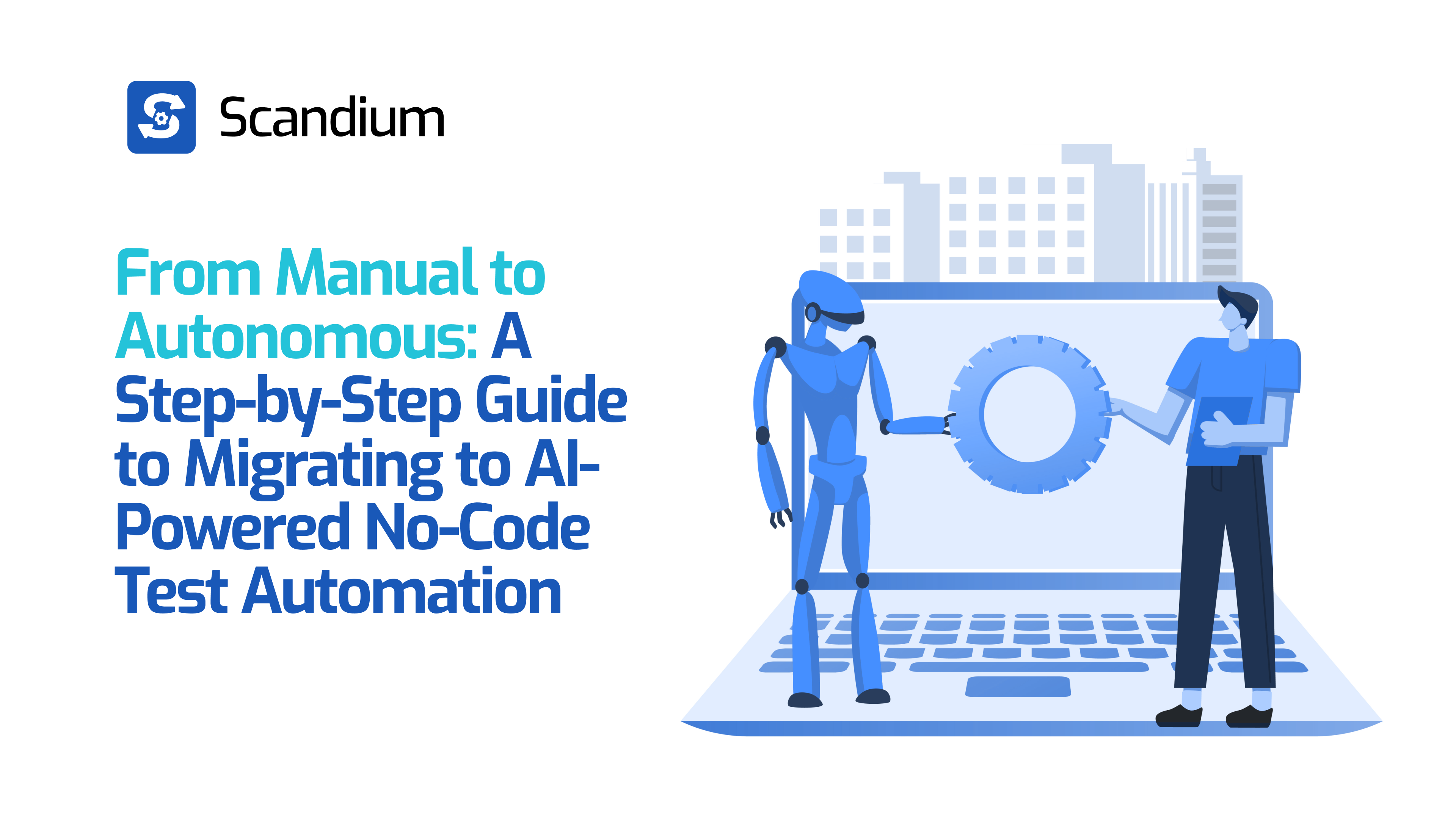
Manual testing has long been the backbone of quality assurance, but in today’s fast-paced development cycles, it can’t keep up with the speed, scale, and complexity of modern software. Teams are now moving beyond traditional automation and embracing AI-powered, no-code test automation to unlock higher productivity, faster releases, and greater test reliability.
If you’re still relying on manual or script-based automation, this guide walks you through a seamless step-by-step migration to autonomous, no-code AI testing, powered by platforms like Scandium.
Step 1: Evaluate Your Current Testing Approach
Before you migrate, map out your testing reality:
- How many hours are spent on manual regression?
- Are testers writing fragile scripts?
- Do test cases break frequently after UI changes?
- Does test creation depend on developers or QA automation engineers?
- Are you struggling to scale API, mobile, and web testing?
Once pain points are clear, determine which areas are most ripe for automation.
Step 2: Choose the Right AI-Powered No-Code Platform
Your choice of platform determines how smooth your transition will be. Look for:
No-Code Support
Test creation with clicks instead of scripts.
AI-Powered Maintenance
Automatic detection of UI changes (self-healing tests).
Cross-Platform Coverage
Support for web, mobile, and API testing in one place.
Scalability & CI/CD Integration
Seamless execution in development pipelines.
Collaboration & Reporting
Designed for QA teams, PMs, and non-technical testers.
Scandium checks all these boxes, making it easier to migrate without rewriting tests or hiring specialists.
Step 3: Start with High-Value Manual Test Cases
Begin by automating:
- Repetitive regression tests
- Complex UI flows that slow manual QA
- API workflows reused across features
- High-risk or business-critical functions
Scandium lets your testers record real user journeys in minutes and turn them into reusable automated tests, with no coding.
Step 4: Leverage AI to Reduce Test Maintenance
One of the biggest challenges with Selenium, Appium, or coded frameworks is maintenance. When a button name changes or an element shifts, scripts break.
AI-powered no-code tools like Scandium solve this with:
- Smart element recognition
- Self-healing tests
- Automated locator updates
- Detailed error diagnostics
You’re not just automating tests, you’re eliminating test flakiness.
Step 5: Run, Optimise, and Scale Your Automation
Once early test flows are automated:
- Organise test suites (e.g., smoke, regression, API, mobile)
- Run tests locally or in cloud environments
- Schedule executions or trigger via CI/CD
- Analyse detailed reports with screenshots and logs
- Tag and diagnose failures automatically
Scandium even lets you simulate SMS and email flows, handle multi-tabs, and manage OS-level interactions without scripts.
Step 6: Upskill Your Team (Without Teaching Them to Code)
One of the biggest barriers to traditional automation is skill dependency—only technical testers can contribute.
With no-code AI automation:
- Manual testers join automation, instantly
- Product owners validate flows visually
- Developers focus on features, not test scripts
- Collaboration becomes seamless
Migration becomes a team upgrade, not a skill bottleneck.
Step 7: Fully Transition to Autonomous Testing
As you automate more workflows:
- Expand to API and mobile coverage
- Integrate test runs into deployment pipelines
- Use dynamic data and reusable test blocks
- Replace manual regression entirely
- Monitor end-to-end quality from one dashboard
The final stage is continuous, autonomous testing, where AI handles detection, execution, and maintenance.
Why Scandium Makes Migration Effortless
Unlike script-heavy tools, Scandium is built to let QA teams, PMs, developers, and even non-technical stakeholders participate in automation instantly.
With Scandium, you get:
- No-code recording
- Web, mobile, and API automation
- Self-healing tests
- AI-Powered real-time debugging
- Real-time data injection
- Cloud and local execution
- CI/CD integration
- Team collaboration features
- Email/SMS testing without setups
- Visual reporting & error insights
You’re not just migrating, you’re future-proofing your QA process.
Final Take: Start Small, Scale Fast
Migrating from manual or code-based testing to AI-powered no-code automation doesn’t require a complete overhaul. You can start with a few test scenarios and evolve into full autonomy while keeping your current workflows intact.
If you’re serious about speed, quality, and scalability, tools like Scandium make it achievable, without needing to write a single line of code.
Ready to move beyond manual and legacy automation?
Your autonomous test era starts now. You can book a demo to see how Scandium works.
